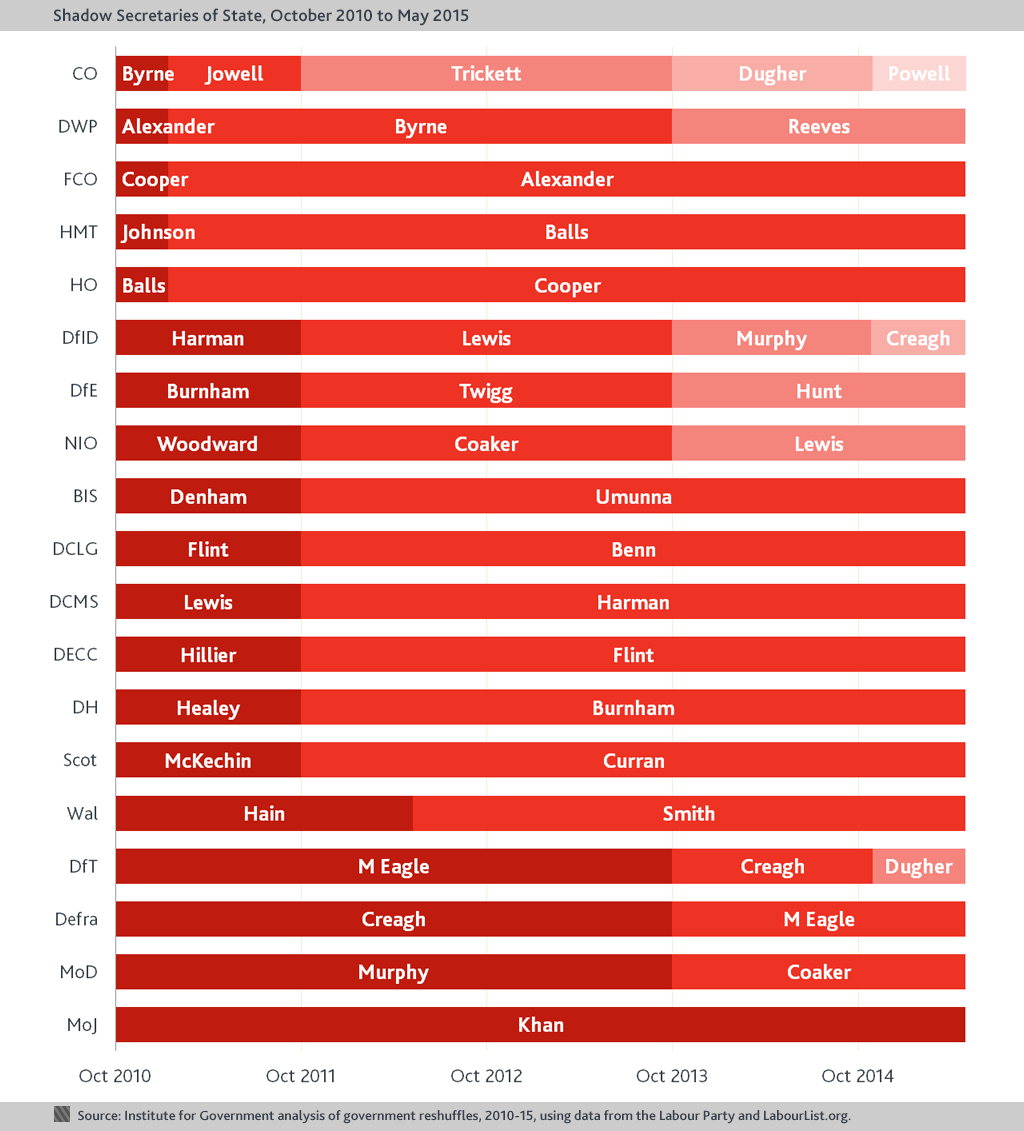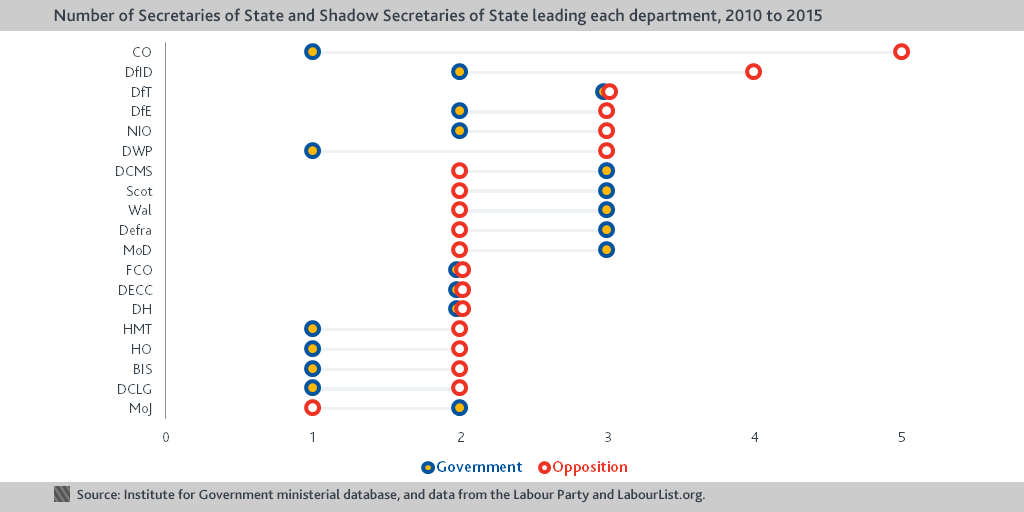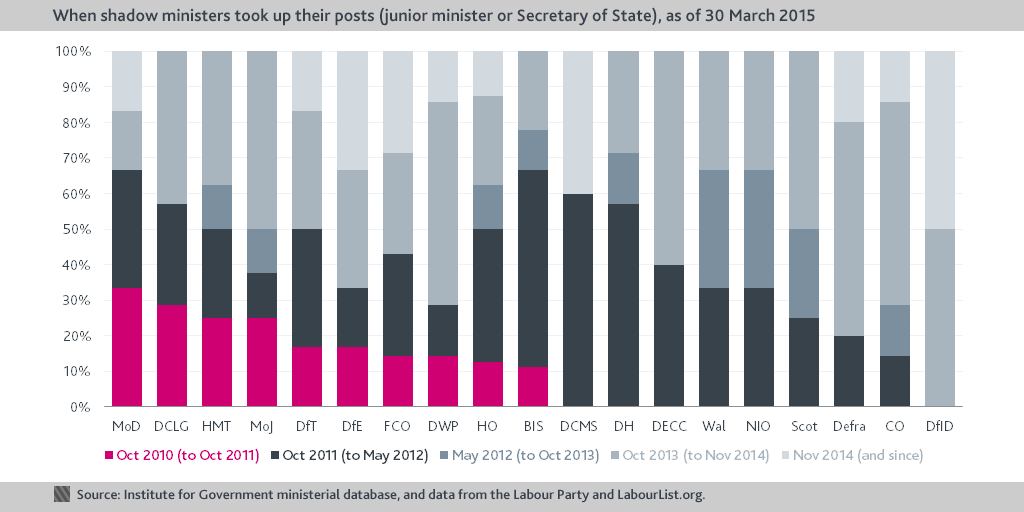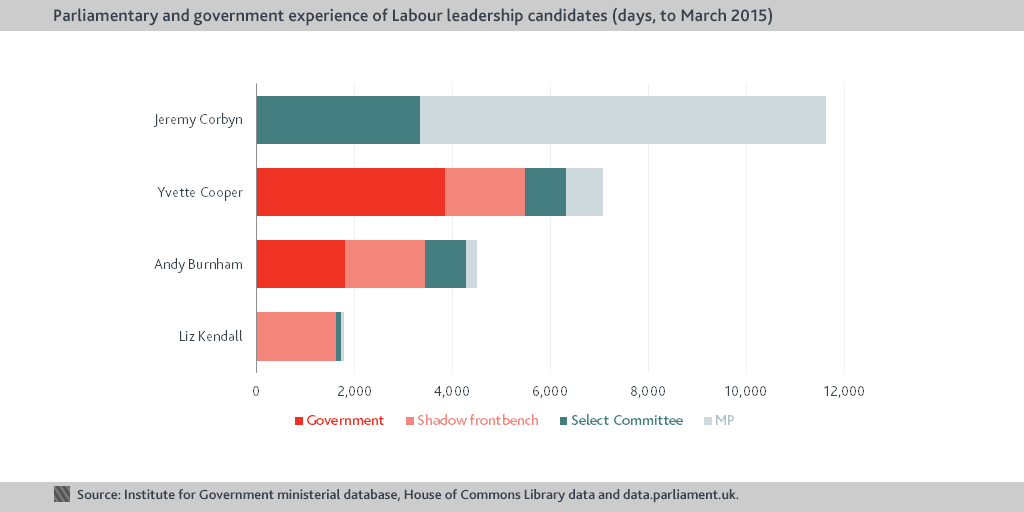Change is afoot in the Labour Party: with the new leader announced on Saturday 12 September, the Party could end up with a very different frontbench team. But what happened to the shadow frontbench under Ed Miliband? Emily Andrews and Gavin Freeguard take a look.
Ministerial stability is important: it allows ministers to build up experience and maintain focus. The same could be said for Opposition frontbenchers, who have to balance long-term policy development with other commitments (like responding to media stories) and without the benefit of the Civil Service. The coming weeks could see big changes to the shadow cabinet, but change is a feature of any frontbench team as people are shuffled in and out. Just how stable was the Opposition frontbench under Ed Miliband during the 2010–15 Parliament? Only one Shadow Secretary of State remained in the same post for the whole of Ed Miliband’s leadership. 



- Topic
- Ministers
- Keywords
- Shadow cabinet Official opposition
- Political party
- Labour
- Publisher
- Institute for Government